The enigmas of mars(27)
페이지 정보
작성자 별사나이쪽지보내기
메일보내기
홈페이지
자기소개
아이디로 검색
전체게시물
댓글 0건
조회 1,245회
작성일 10-01-28 10:02
별사나이쪽지보내기
메일보내기
홈페이지
자기소개
아이디로 검색
전체게시물
댓글 0건
조회 1,245회
작성일 10-01-28 10:02
본문
MARS DUNES, TREES & TECHNOLOGY?
Report 177
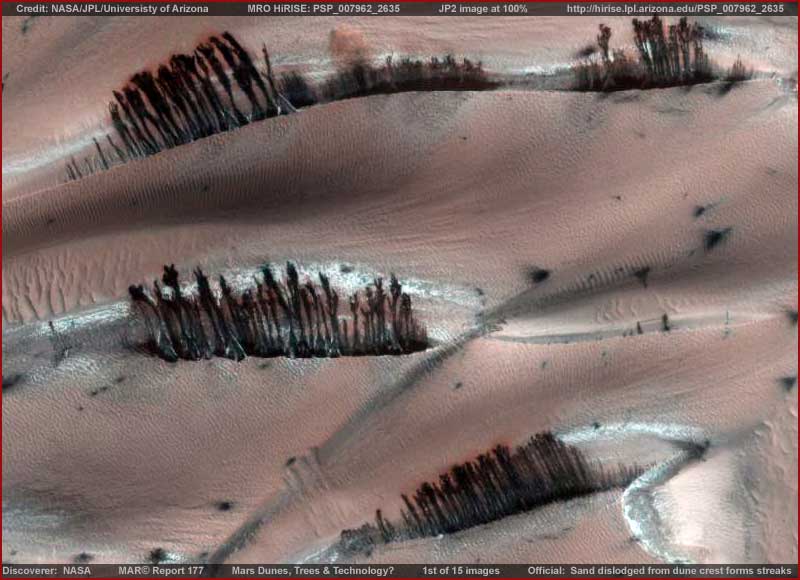
Many of you around the world have likely seen the above Mars image recently circulating on the Internet and in the
various news media. The source of this image is the MRO HiRISE science data and the strip is PSP_007962_2635
found at the above link. The media speculative hook is that the above evidence looks an awful lot like trees on Mars
but isn't really. It's obviously a beautiful image with its colors and shadings produced at official level (I'm envious) and
this visual impact is no doubt one of the main reasons why the media is so readily reporting on it.
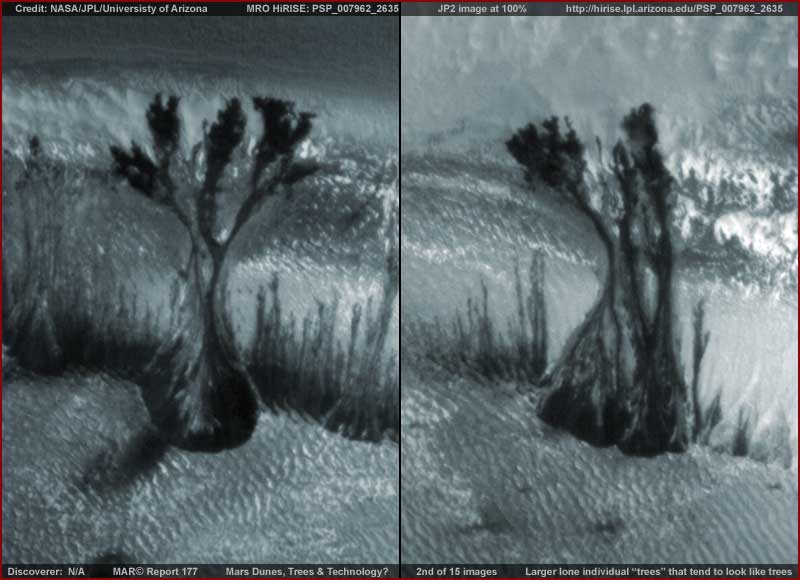
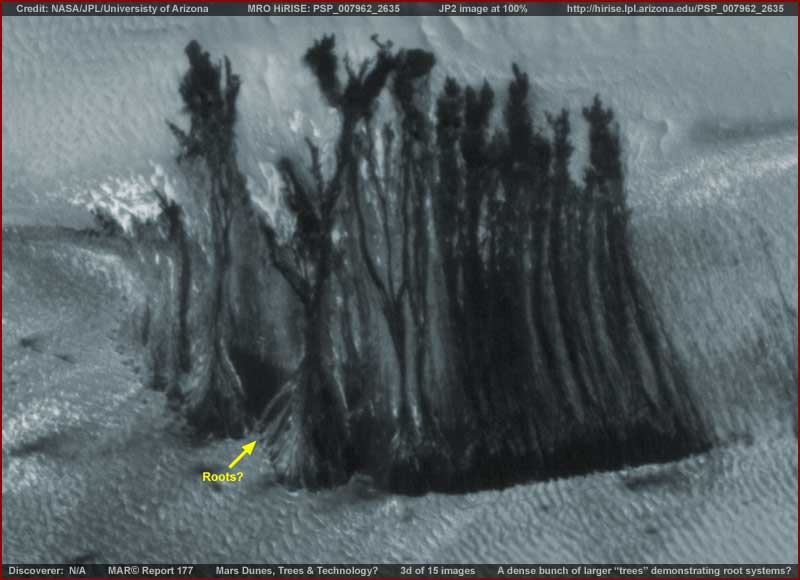
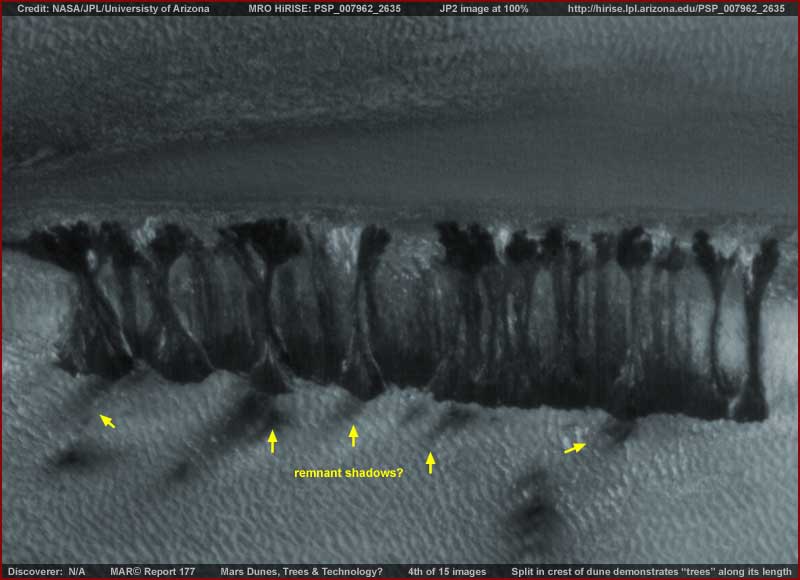
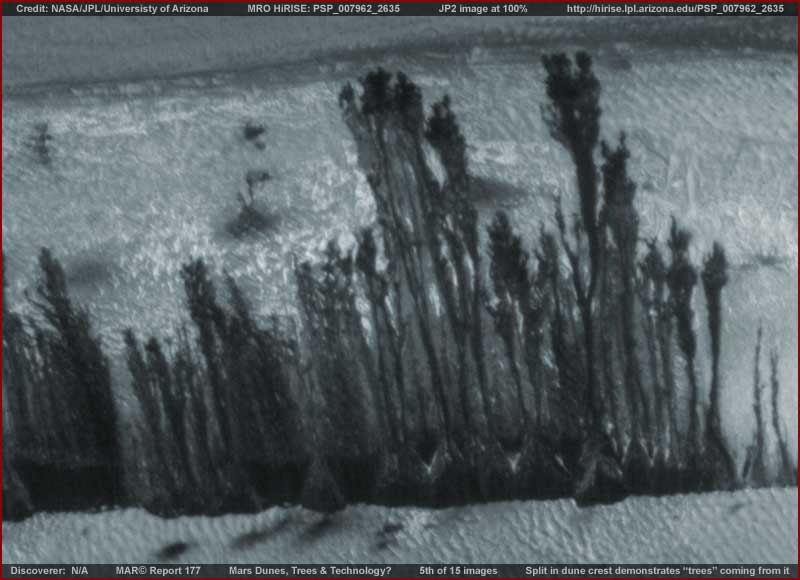
My selection of the above 2nd–5th images tend to support the so called "tree" evidence look but they are not
definitive in that regard. For example, note that if these are upright vertical formations where are their shadows?
The problem is that I do not trust the imaging and suspect the shadows have been removed or at least subdued.
Note the 4th image and what I've pointed out with the yellow arrows that may be remnant shadows not completely
removed.
If this is water ice, it may just be possible that the loss of Mars' great seas was so gradual that it allowed some sea life
to adapt to open air conditions. Corals, nudibranchia, and sea slugs are examples that come to mind. Maybe some Mars
sea creatures of the ancient past where consistent cold environment temperatures permit carry the water around them in the form of a water ice shell combined with soil. Perhaps these dark objects are temporary retractable projections
like breathing appendages? It's speculation but I suspect we're going to eventually learn that a lot of things we never
considered before may be realities on Mars.
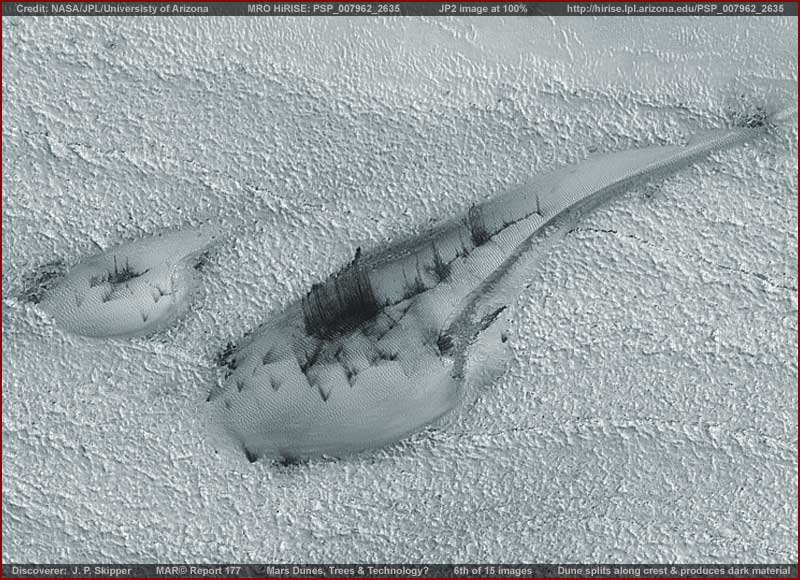
Now the above 6th image moves us out of the more densely packed dunes collection area in the same image strip and demonstrates a couple of smaller dunes a little further out in the Polar terrain. Note that these dunes are characterized by having a extended tapering tail on them. Note also that they are showing signs of fissures just forming at the dune
crest and continuing down along the dune's length.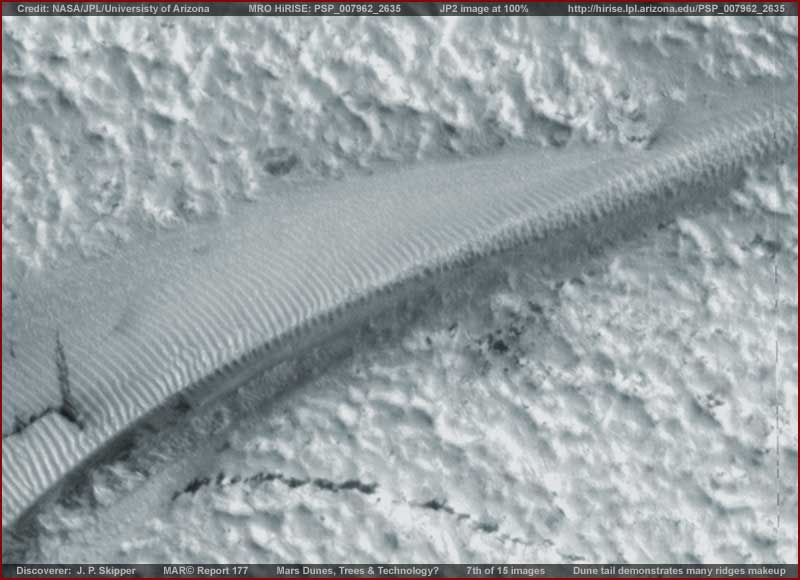
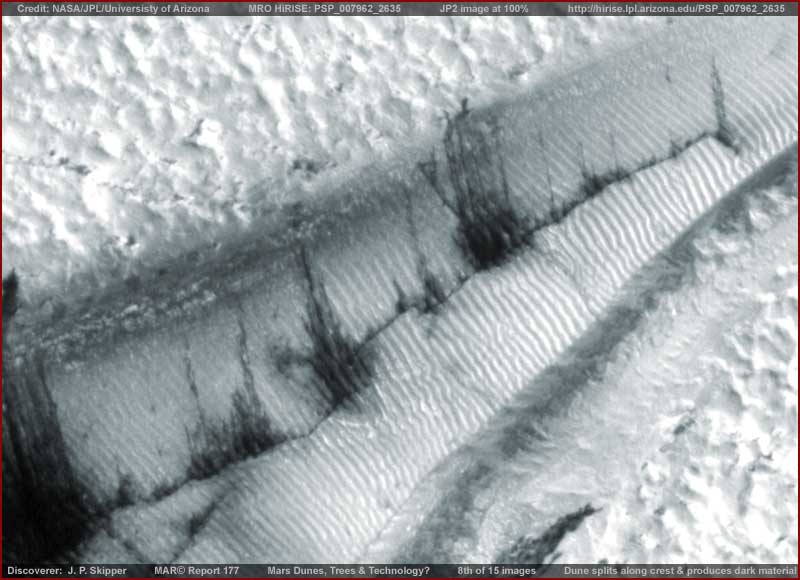
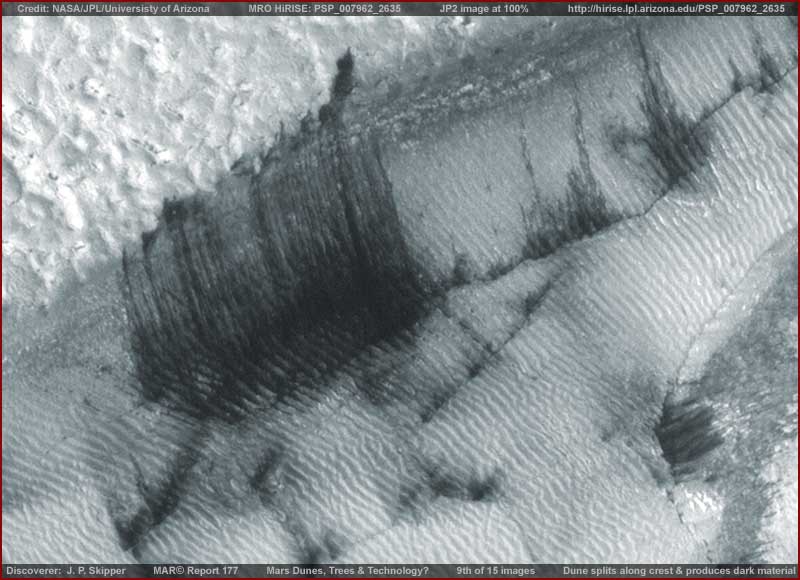
As you can see in the above 7th–9th images, the dark material coming out from within the dune mass via these
fissures also appears to be upright and vertical. If you question this, note the many parallel ridges on the light color
dune mass and that the largest concentrations of the dark material completely ignore and are unaffected by crossing
these rough directional patterns. Do you think that this would be the case if the dark material was merely dark loose
sand pushed out, hugging, and flowing across this dune mass surface and down its slopes? The answer is obvious.
.
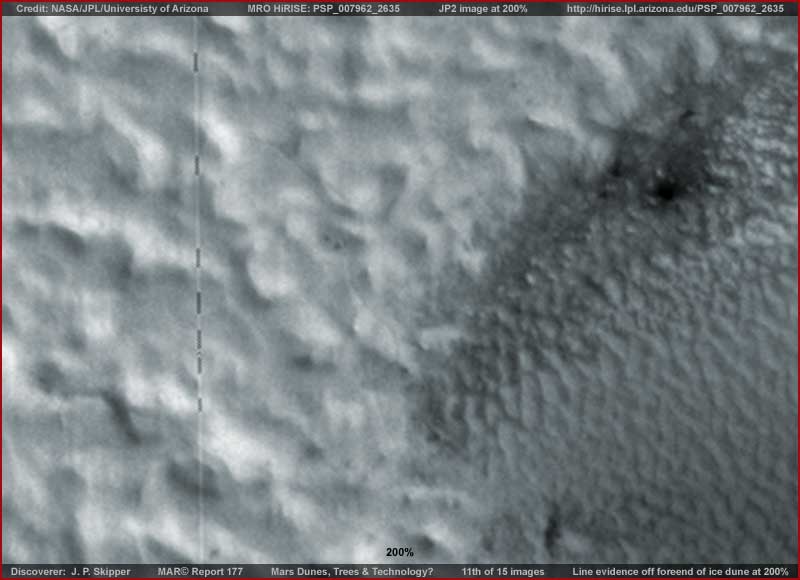
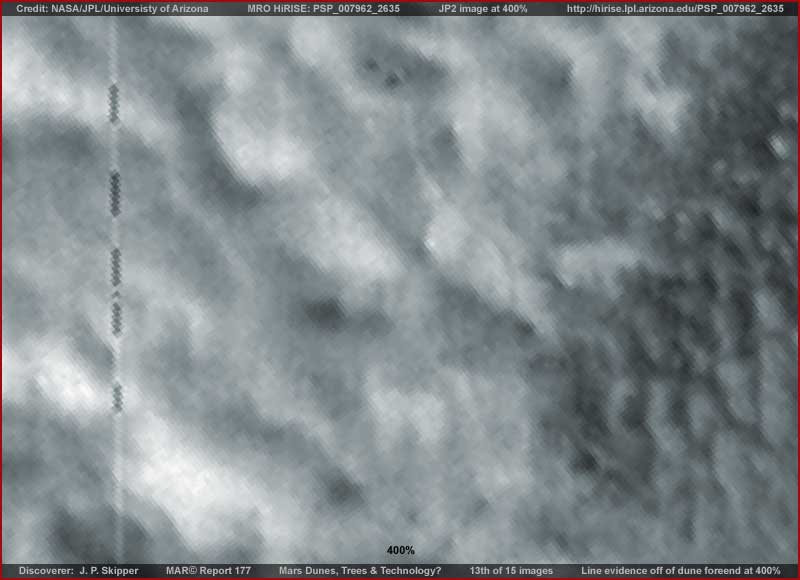
As you can see, the dark objects turn out to be many darker diamond shaped objects or square objects rotated 45º to form the diamond shape. I can tell you that some objects are alone, some in groups of 2–6 and some in longer strings
in tandem as you see above. Most are in a darker color that becomes even darker at the point where the diamond
shapes overlap each other in tandem. Some also have dark directional "V" shapes in them as you can see above but
those are less numerous.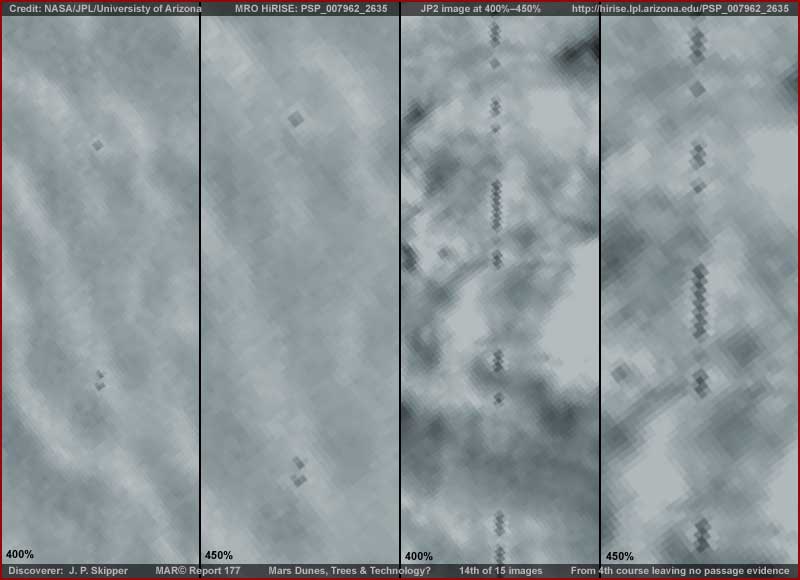
If this were real Mars evidence, I would say that the light color continuous line is there in the other three courses
because the traffic is so heavy in those courses. I would say that the light color line appearance is not a tube
or structure but condensate forming in the thin atmosphere from the friction and heat signatures of the very heavy
traffic. That is also why there is no light color line in the fourth course because the traffic there is too light to
cause enough atmospheric friction or heat signature to form it.
댓글목록
등록된 댓글이 없습니다.